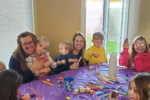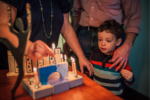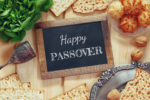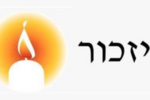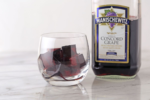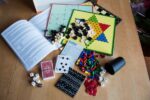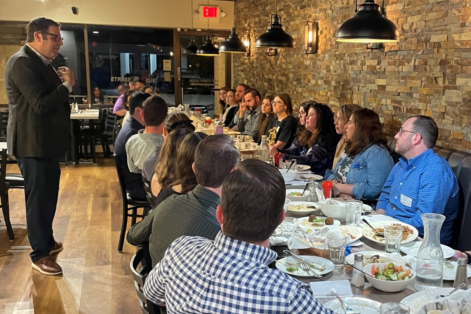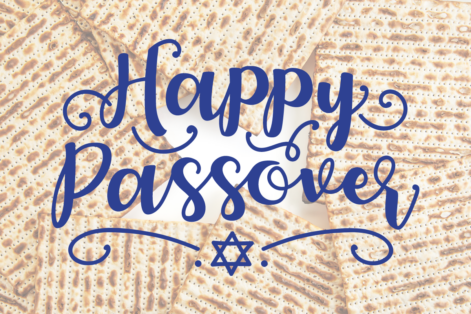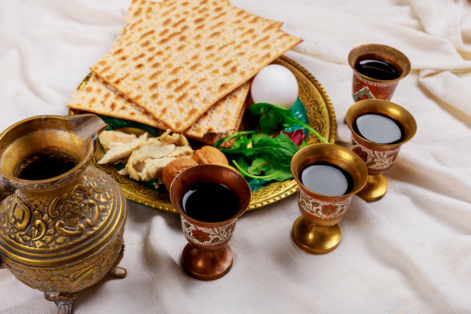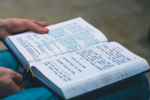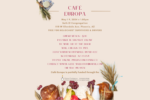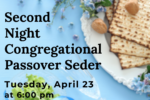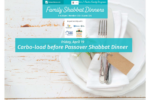(PJ Library) – Looking to bake your own kosher matzah at home? You can do this!
There are a whole set of rules to bake homemade matzah that is kosher for Passover, and the process can be extremely rewarding. With a good plan before you start, the right tools, and the right team working together, you can have homemade kosher-for-Passover matzah to serve at your Passover seder and throughout the holiday.
Matzah requires only two ingredients – flour and water. But for matzah to be kosher for Passover, you’ll need special flour, as well as utensils and equipment suitable for Passover baking. And of course, matzah-baking is an exciting race against the clock. (More on that below.)
Adults and kids can work together to bake matzah that is kosher for Passover. But matzah that’s eaten by adults at a Passover seder (ritual meal) needs to be baked solely by adults. So when baking matzah for the seder, just keep track which matzah is adult-prepared and which is prepared by adults and kids together.
Matzah is called both the “bread of poverty” (eaten by Israelite slaves in Egypt) and the “bread of freedom” (bread that didn’t have time to rise as the Israelites fled Egypt). Going through the steps of baking matzah at home can make you feel more connected than ever before to Jewish history, traditions, and liberation.
Let’s get started!
Intention
At every stage of the process – whether lighting the oven, pouring the water, kneading the dough, or putting it in to bake – you want to have in mind that you are doing all of this not just to bake bread but to fulfill the mitzvah (Hebrew for “commandment”) of matzah on Passover. This is how we take the everyday activity of baking bread and allow it to bring us to a place of deep connection with our ancestors who ate this bread thousands of years ago.
Preparation
Here are important steps you need to take before the baking begins:
Get your oven ready. A day before you want to bake matzah, you have to make your oven kosher for Passover. You can run the self-clean cycle if your oven has one, or you can just clean it off from any accumulated dirt and grime and then run it on its highest heat for an hour. That’s it!
Get your counters ready. Any counters you will use for kneading should be thoroughly scrubbed and cleaned with soap. You can then prepare them for Passover by leaving them unused for 24 hours, boiling a tea kettle, and pouring a thin layer of hot water over the entire surface that you will use.
Fire up the Oven. When you are actually ready to bake, turn the oven on to its highest heat.
Equipment
Here are baking utensils and accessories you’ll need:
- A stainless steel rolling pin (submerged in boiling water if not new), a new wooden rolling pin, or a used wooden rolling pin and a bunch of fine grade sandpaper.
- A new 18″ stainless steel baking tray – best to get two if you want to save time. You can also put heavy duty foil on your oven racks – and be prepared to replace the foil when it tears.
- A stainless steel wide mouth mixing bowl, or you could also use a glass bowl.
- A plastic fork for perforating, or purchase a dough docker.
- An oven mitt that is either brand new or freshly laundered.
- An all-metal spatula, either kosher for Passover, brand new, or immersed in a pot of boiling water in order to make it kosher for Passover.
- A utensil for keeping counters clean as you go. You may want something like this to quickly knock crumbs off.
- Laundered (or new) dish towels to be used for drying equipment thoroughly as you go.
Ingredients
Matzah only has two ingredients.
Flour:
Special flour is required! You can’t just get flour from the supermarket, because it is treated with water. The grain should be guarded from the time it’s harvested, or at least from the time when it is getting ground into flour. You can order some of this special flour here: https://www.mitzvahmatzos.org/
Water:
Water for matzah was traditionally taken from a stream, but if this is not possible, our municipal water systems are equally acceptable. Just fill up a bowl or pitcher with at least a quart of cold water from the tap right before sunset and then store in a cool dark place (like the refrigerator) overnight.
Speed
On Passover, we tell about our ancestors being in a rush to make matzah and leave Egypt, and it’s true that matzah must be made in a hurry. The strictest view is that the whole process must take 18 minutes. Dough that is being worked never rises, but dough that’s sitting idly will rise in 18 minutes. Some people say that the 18-minute required time frame includes the smaller bits of time the dough rests between kneading and shaping. If you move along at a good clip, you won’t need to worry about this.
Location
Matzah baking is an indoor project. Regardless of the weather, all your kneading should be done under a roof. You also need to stay away from heat. If you have to knead in the same room as the oven, keep the dough as far from the oven as you can.
People
You need a team of people to make matzah – you can’t do it alone! Minimally, you should have three people working at once:
- A person who is kneading and then cleaning
- A person who pours the water and then shapes the dough
- A person who is monitoring the oven
If you have more people, you can divide up these jobs and also have multiple people shape dough. That way, you can simultaneously bake as much matzah as your oven can comfortably fit.
Everyone should remove rings from their fingers (watches too!). Make sure everyone who will be involved has cut their fingernails (so dough can’t get under them), or at least cleaned their nails thoroughly. Everyone should wash their hands with cold water, and then dry them completely.
Mixing and Kneading
Step 1: Depending on how many people you have making matzah, pour anywhere from a quarter cup to a cup of the flour into the mixing bowl.
Step 2: One person should drizzle a little bit of water at a time onto the flour while the kneader immediately begins mixing it in. Go slowly and start with a smaller amount of water than you think you might need, then add more in small amounts until it feels like a proper dough that you can knead, but not sticky. Don’t let any bits of flour escape; blend them all in and proceed carefully! (Note: You can always add water to flour, but not the other way around. Unlike in other kinds of baking, if your dough is too sticky, you can’t add flour to fix it, because you might get clumps of flour that won’t properly bake in the oven and could become hametz – leavened food, not kosher for Passover.)
Step 3: Once the consistency is right, knead the dough in the bowl for a good 5 minutes until it feels springy and well blended. Then break up the dough into enough pieces for each person who is going to shape a piece of matzah.
Rolling and Shaping
Step 1: As soon as kneading is completed, put the piece of dough on your surface (don’t flour it like you normally would!).
Step 2: Roll once with the rolling pin, then flip the dough over and rotate 90 degrees. Repeat this over and over. Pretty soon you should have a nice flat pancake of dough. (This rolling method is meant to prevent the dough from getting stuck to the table or the pin. If the dough does get stuck, throw it out, clean up, and start over – using less water the next time!)
Step 3: Take a fork and perforate the matzah over its entire surface so it is totally covered with holes. Flip it over and do the same on the other side, on a slightly different axis.
Step 4: Drape the dough on the rolling pin and bring it over to the oven.
Placing in the Oven
Put the unbaked matzah in the oven on the stainless steel baking tray, or place directly on oven racks covered with heavy duty tin foil. The matzah should be rolled onto the baking surface from the rolling pin so that it lies totally flat with no bunching up. If the matzah folds over on itself, you may not be able to use it. Do not allow a matzah to overlap with another matzah.
Close the oven and keep the light on so you can see inside.
Flip the matzah to the other side as soon as it has browned and has some sort of crust. Check the oven after 2 minutes, but it may need another minute or two, depending on your oven. Once it is browned, flip it over and bake until the second side is browned.
Removing From Oven and Testing
Once both sides are nicely browned, remove matzah from the oven. Use the spatula to put it on a surface where you can collect and evaluate the pieces. (Remember that kosher for Passover matzah is made by adults only. So at this point, make sure to keep track of which ones were made by kids and which ones were made by grown-ups.)
Now you need to see if the matzah is in fact valid. Allow it to cool for a few minutes and then check for the following:
- If the bread has a good crust on both sides, that is a sign it has fully baked.
- Matzah should not have strands of dough when pulled apart. If a matzah feels underbaked, you will have to make a judgment call as to whether it fails this test. (You can just pull it apart in the area you are worried about, but then it won’t be great to use for the Passover seder.)
- Matzah that has folded over on itself should have that folded portion removed. This also applies to two pieces of dough that overlap in the oven.
- Matzah that has a raised portion or a bubble the size of a hazelnut or larger should not be used unless it has a clearly browned crust.
Cleaning
If you’re making more than one batch of matzah, you need to clean everything after every step of the process. As soon as the kneading bowl is done, wash it and dry it. As soon as the shaping is done, clear the surface of any crumbs. If using a metal rolling pin, wash it and dry it before the next use. (If using a wooden rolling pin, sand it down to remove any pieces of dough before using again.) Knock any crumbs onto the floor and sweep when you’re finished baking.
A happy and kosher Passover!
This article was originally posted on PJLibrary.org.
This post has been contributed by a third party. The opinions, facts and any media content are presented solely by the author, and JewishPhoenix assumes no responsibility for them. MORE





